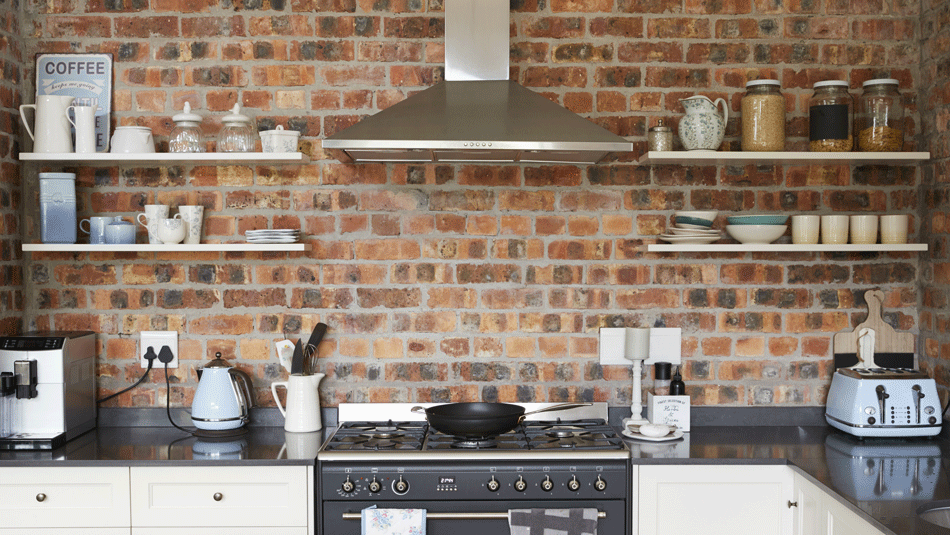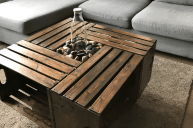If you're buying a historic home, chances are one of the things that drew you in was the charming wall of exposed brick in the living room or dining room. It's hip, it's cozy and it's got oodles of character. Exposed brick is a wonderful look in your living space and I'm here to tell you, don't ever do it. I know; the industrial style vibe of a beautiful brick wall is a popular interior design element and it's easy to fall in love with the look of old brick. Trust me, it's not as fun as it looks.
Exposed brick is freezing in the winter, collects truly amazing amounts of dust, and it's a haven for bugs. Trust me, you don't want to figure out how much you can't stand your pretty exposed brick wall in late January while you're hunting for the extra blanket in the spare room and watching a centipede crawl out of the interior wall in the middle of the night.
After dealing with exposed brick walls in an apartment, my first condo purchase also included them. But I learned a few things along the way to help make this new set of exposed brick walls easier to deal with. So if you must with the exposed brickwork, here are a few things you can do to make your charming feature less of a pain in the wall.
What's so bad about exposed brick?
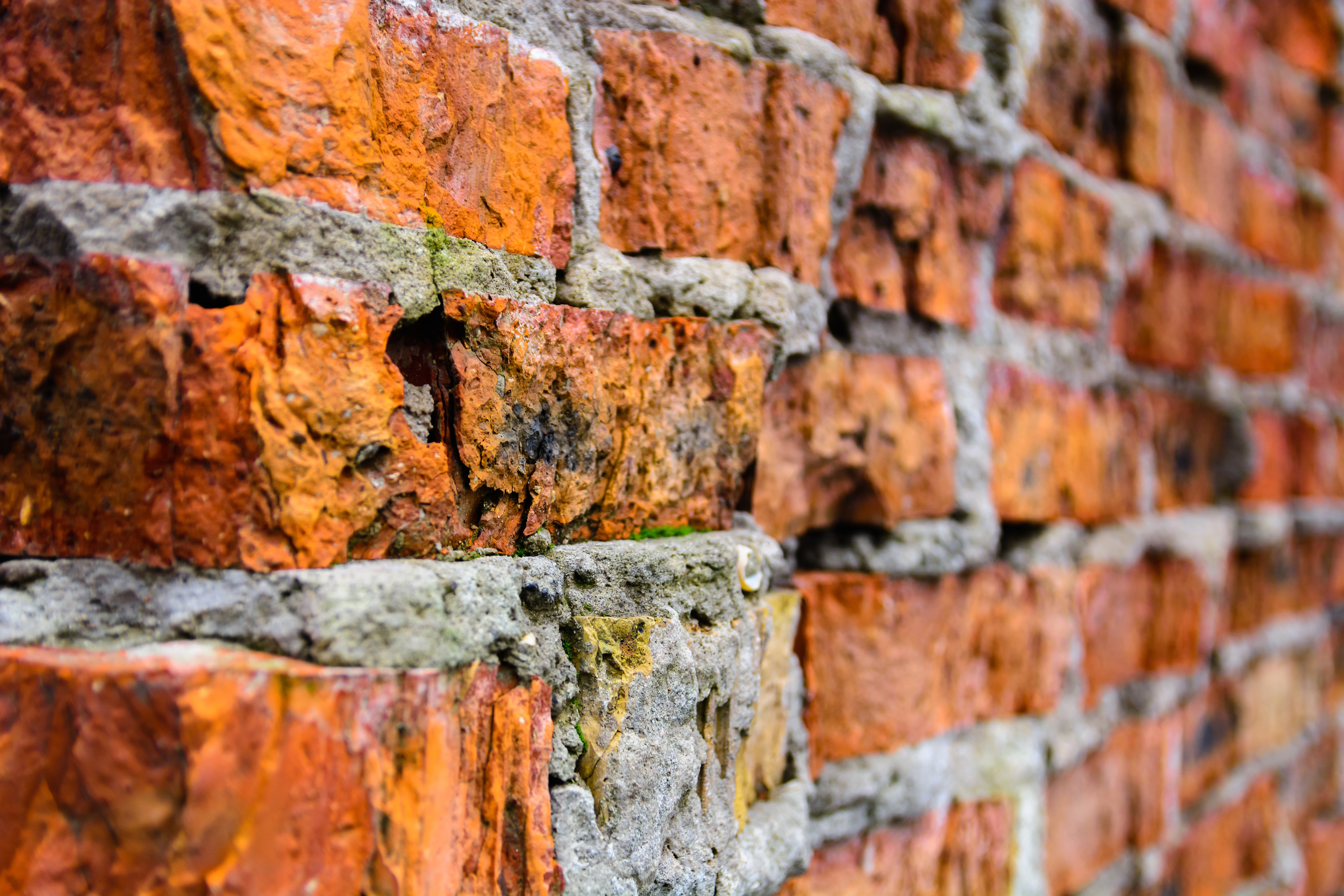
We like to think of brick as being like stone or concrete, impervious to the elements, but even though it's sturdy, it's also porous, which means it absorbs both moisture and dirt.
And, oh, boy, does it absorb dirt. If your exposed brick is part of a cool old factory or warehouse that's been renovated, there could be years worth of manufacturing dust and dirt in that wall. But even if you just have an older home, it means that your bricks have picked up dirt from trucks passing by, construction work on the street, and everything else in the air. All of those tiny particles can filter through little nooks in the brick and into your home, leaving black dust on fan blades, door hinges and wood trim.
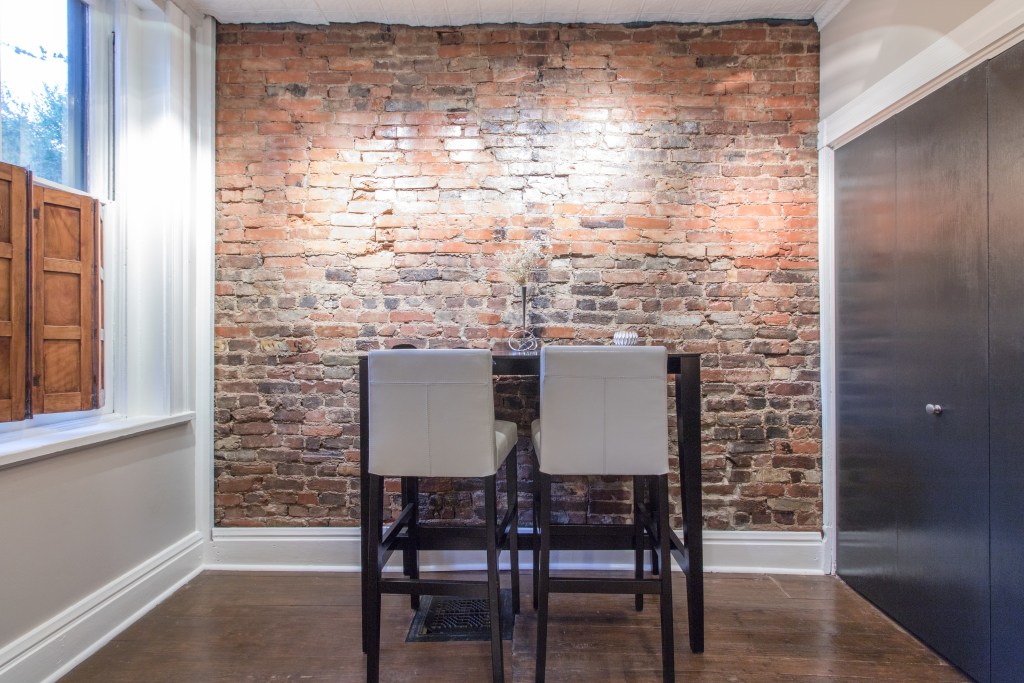
Moisture gets in, too. And in addition to causing the brick to break down faster, it makes the material a welcoming home to bugs like centipedes and spiders. Yes, creepy crawlies love the cracks in brick and they'll love your home, too.
Plus, in the winter, exposed brick can be insanely cold, especially if it's a wall that gets no direct sunlight to heat it up. Loft-style charm can mean a higher heating bill, and no one wants that. Here's what to do to deal with the downside of exposed brick.
Repair
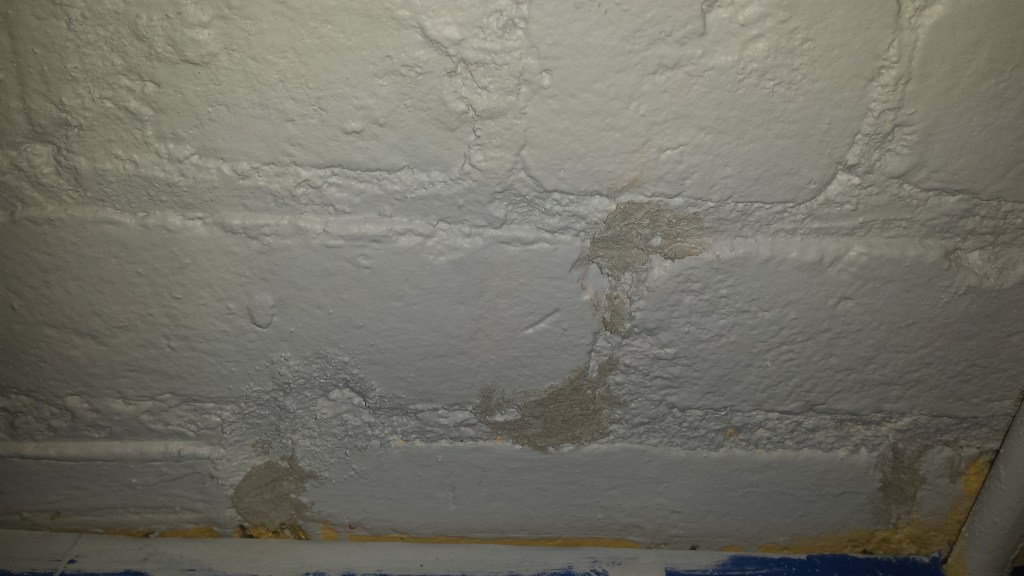
Repair the crumbling mortar and fill in the holes. Get something like this flexible caulk made specifically to repair mortar. It's easy to use and you can paint over it if you're painting your brick.
You can use a caulk gun for bigger holes and cracks, but I found that fingers or a small plastic knife work even better (just put on some gloves first, because it is messy).
Get two more tubes than you think you'll need (I went through three for two relatively small walls) and plan plenty of time to do it, because the DIY process takes longer than a 19-inning baseball game.
Seal
Sealing your interior exposed brick walls will help with the moisture. To do it yourself, this process requires time, ventilation, and a giant bucket of acrylic sealer. Some sealers can give the brick a shiny look, so you may want to look for one that does not.
Applying the seal is just like painting — you simply roll it onto the wall. You'll want to apply two coats and then the sealant needs to cure for 7-10 days.
Paint
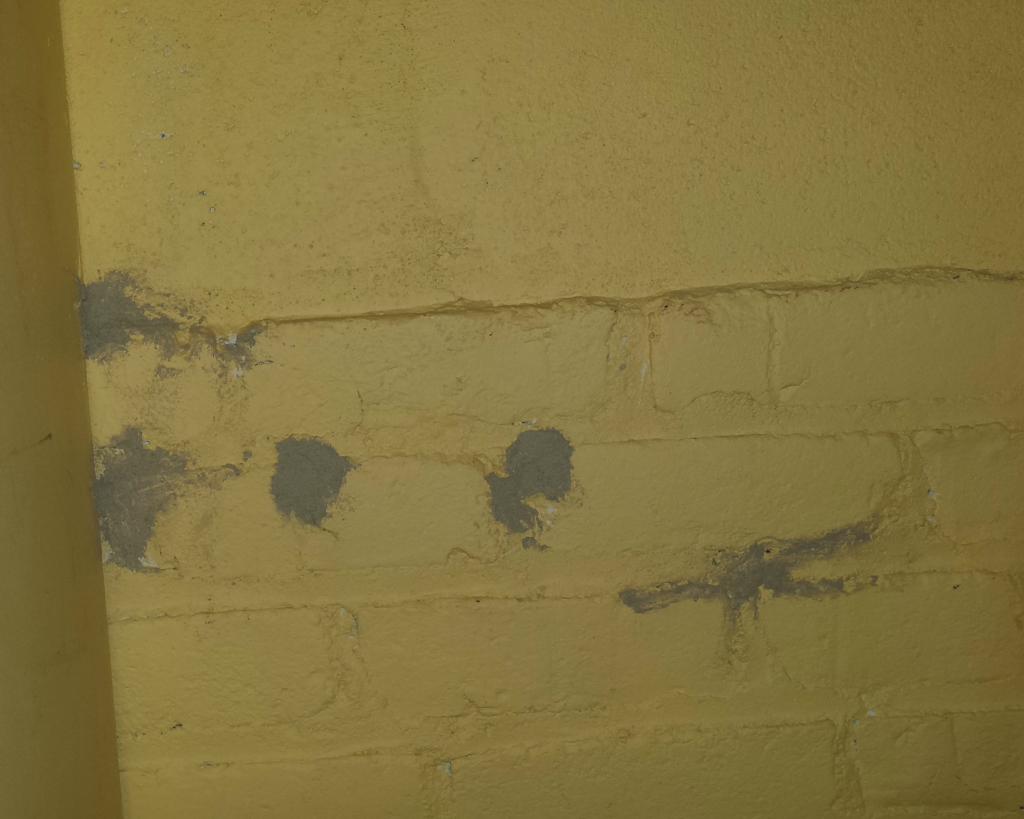
I know, painting exposed brick is a terrible thing to do. But if you're moving into a place where they painted the brick already in a shade that is not on your color wheel, you're going to want to paint it anyway.
There are rollers made specifically for painting brick and masonry and they are wonderful inventions. Use them and you won't hate the idea of painting brick so much. Be warned, though, painting brick is not like painting a wall. Even with the special roller, you still have to put more muscle behind it.
The roller and the brick both soak up paint, so plan accordingly. Also, save an old beat up paint brush for getting into the cracks and crevices where the roller doesn't get. And if all that fails, you can do what I plan to do in my next renovation project, should it ever include more exposed brick: drywall it all.
This article was originally published on March 30, 2018.

